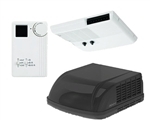Website Identity Confirmed at 2/15/2025 6:36:08 AM
www.rvupgradestore.com
Address:
33801 Curtis Blvd #110
Eastlake, Ohio 44095
US
www.rvupgradestore.com has been validated to have a secure SSL certificate which provides industry standard data encryption of information transferred from your computer to the website.

